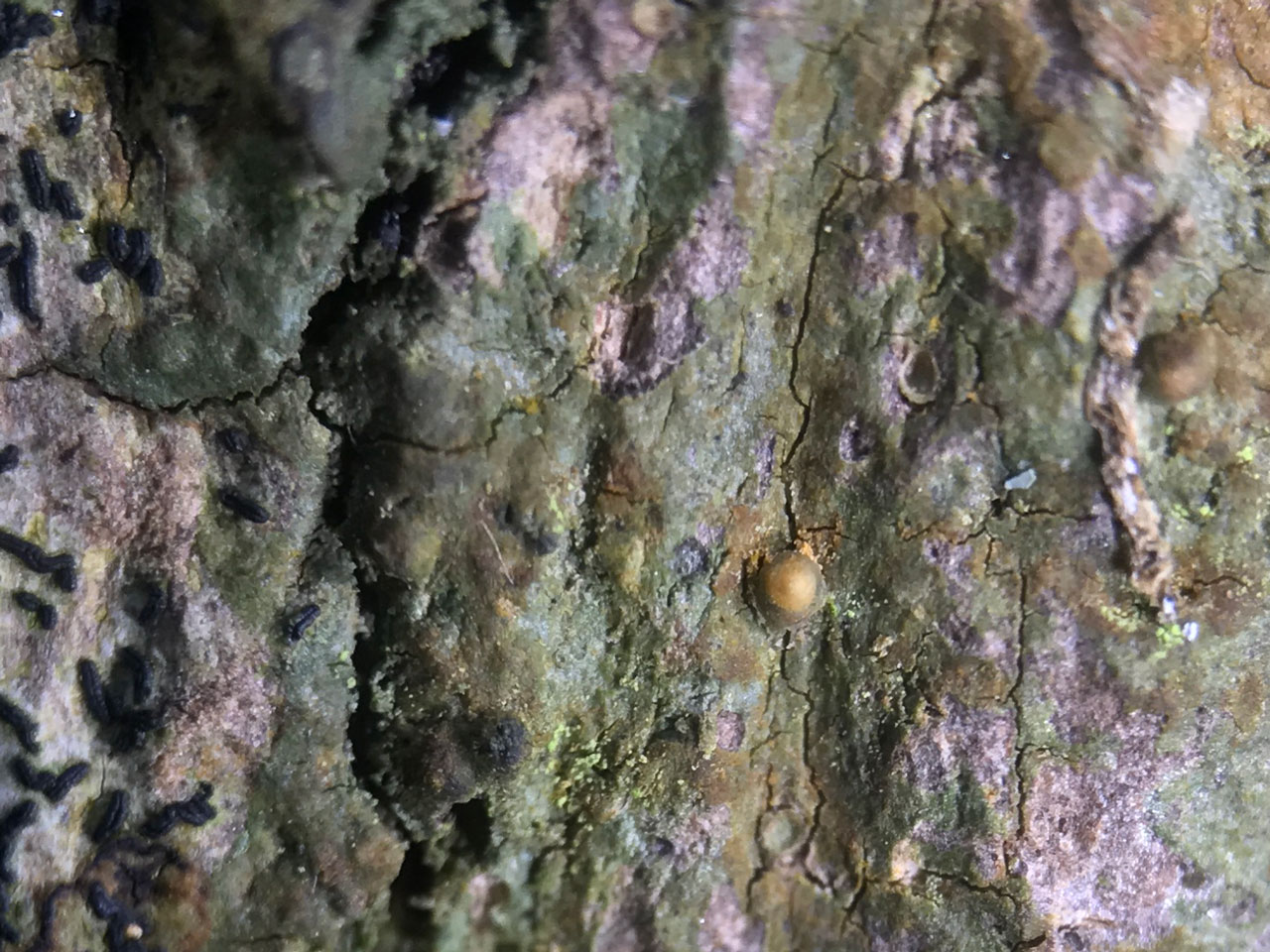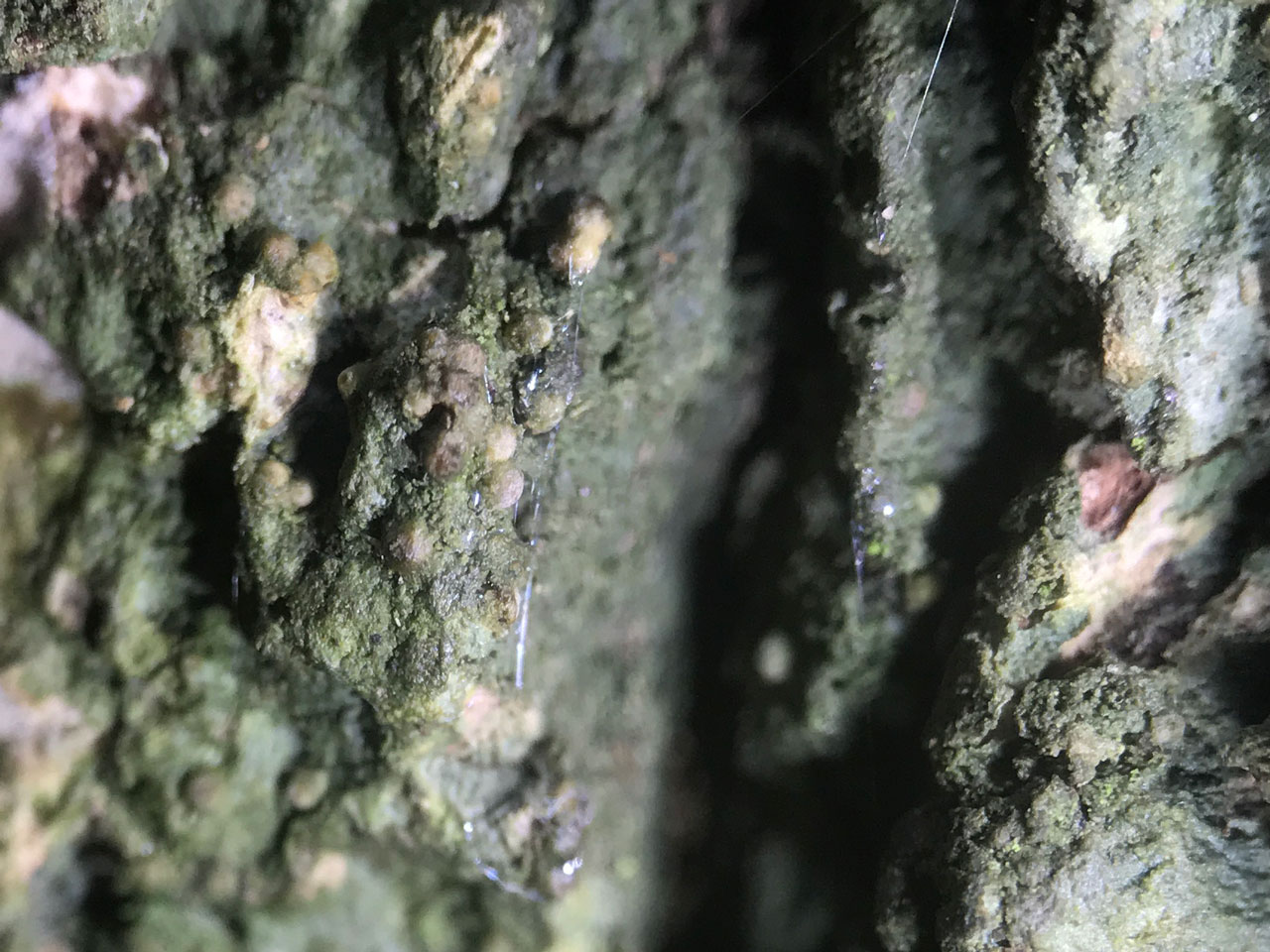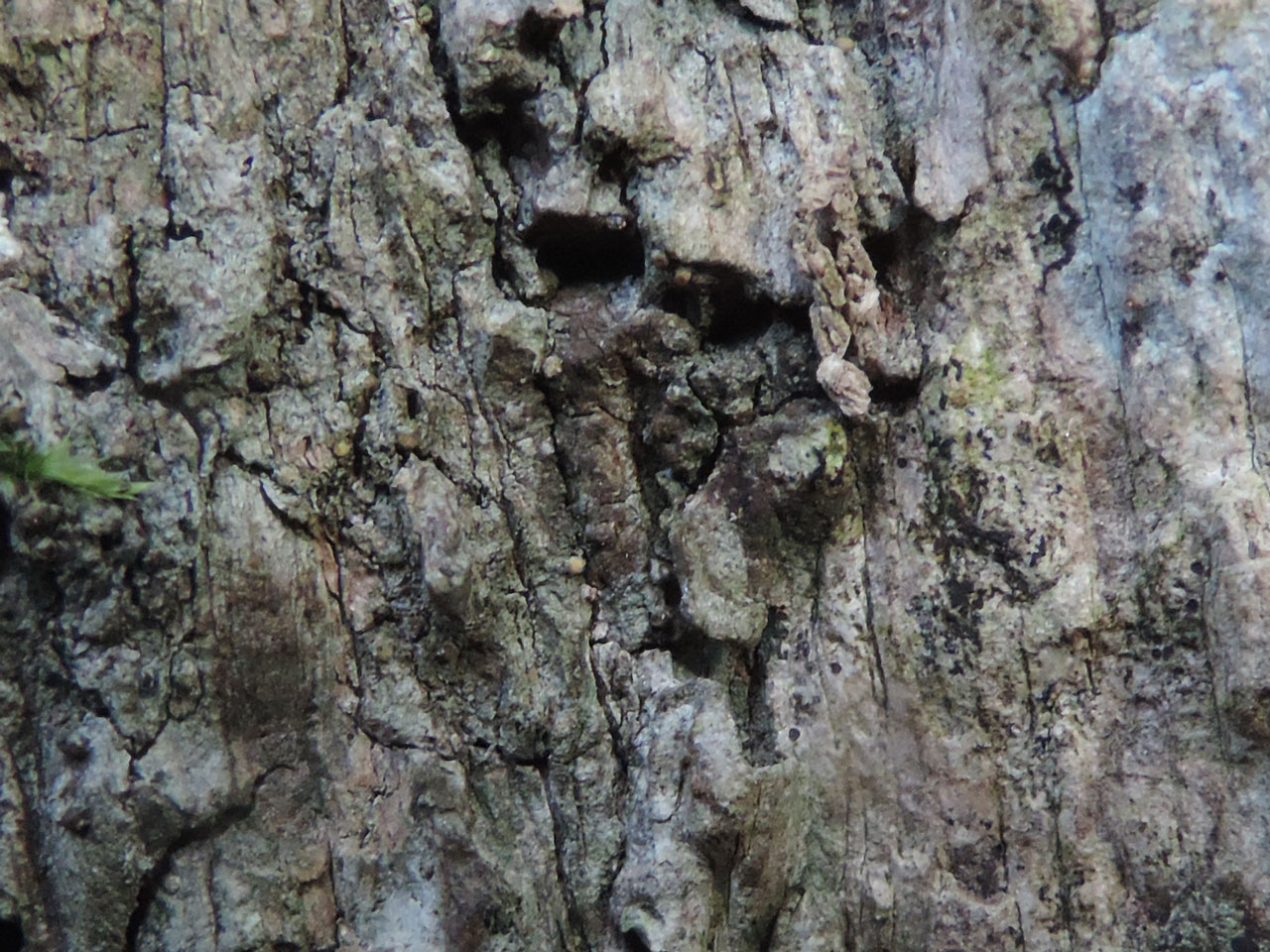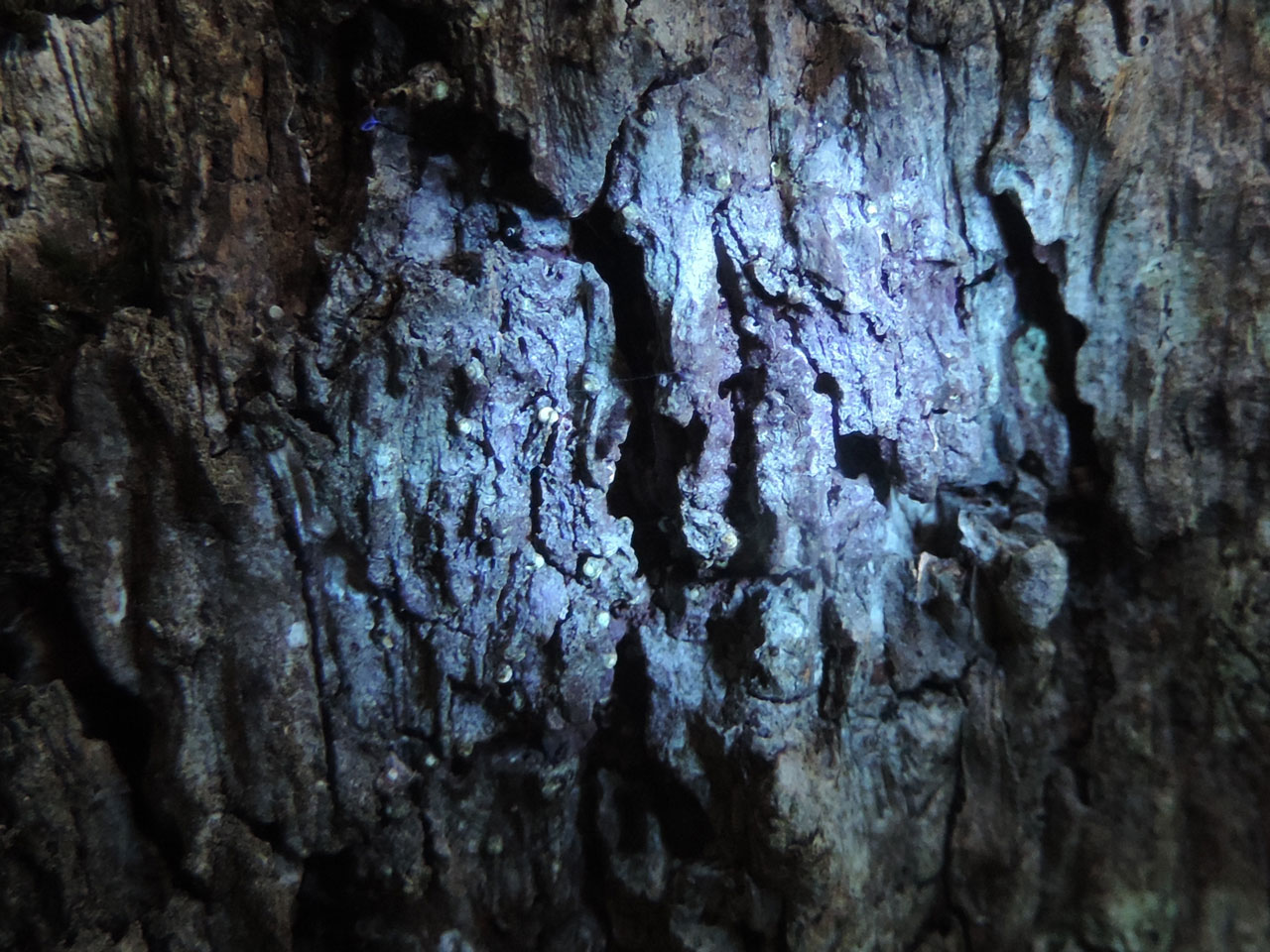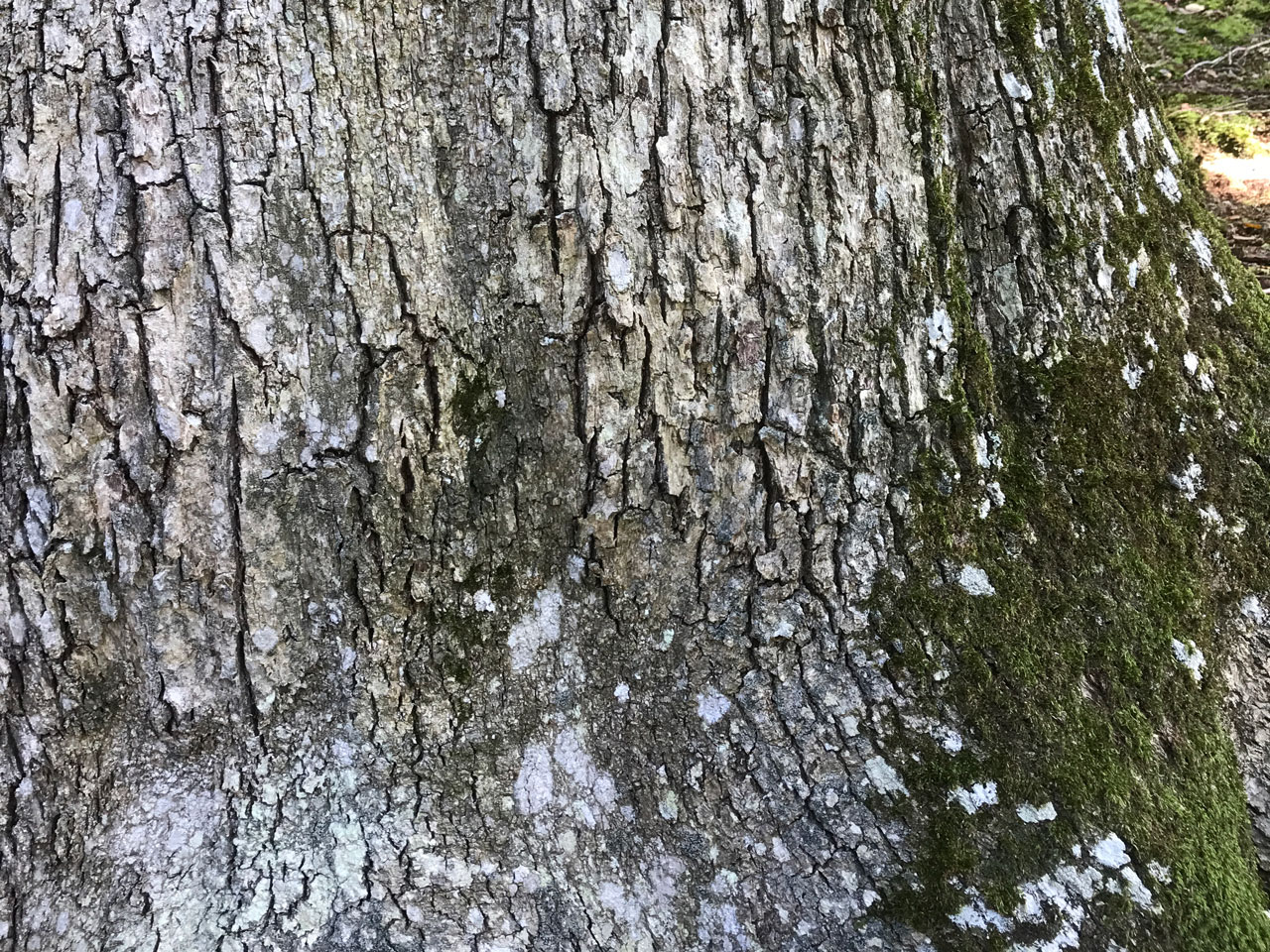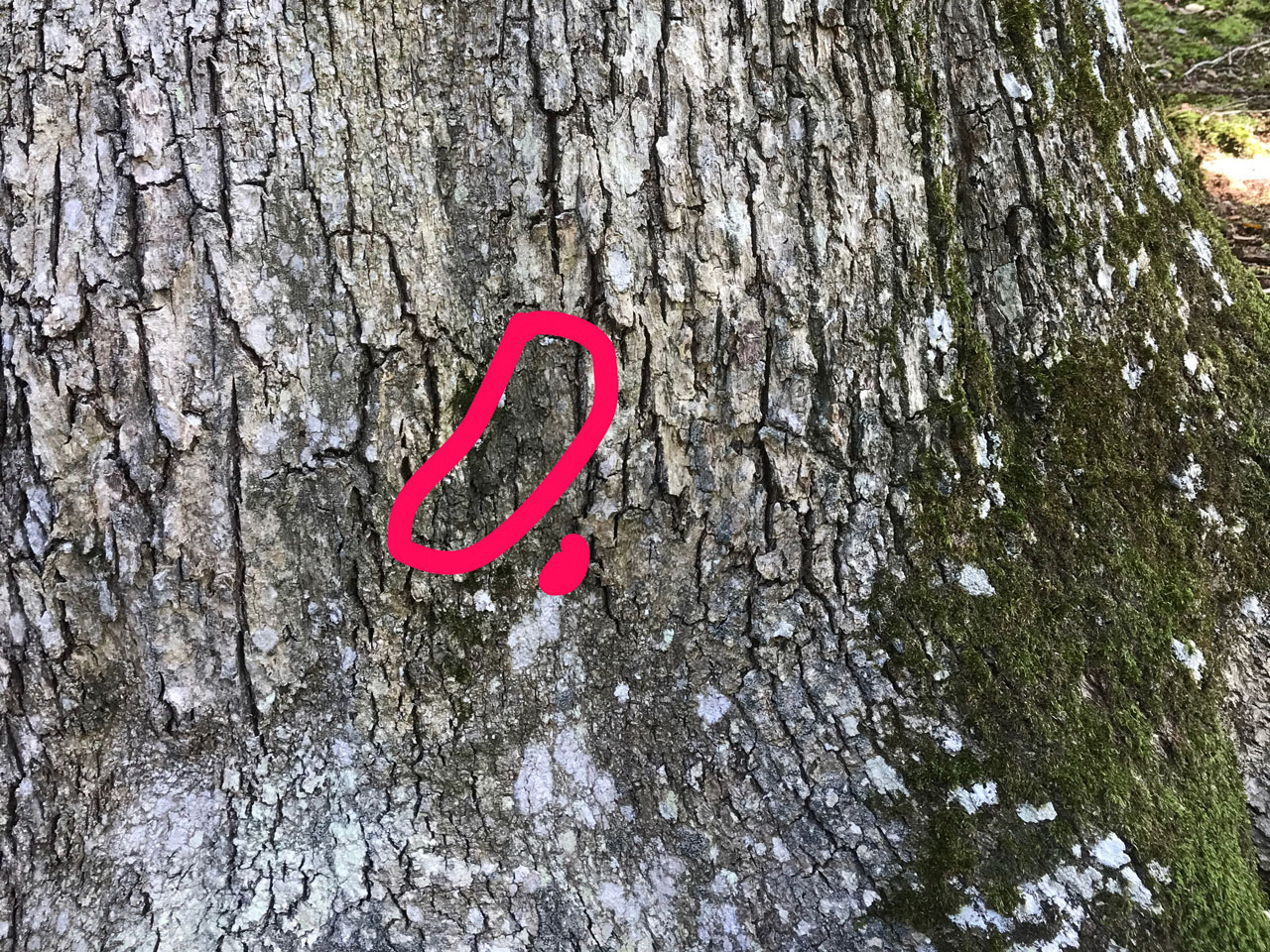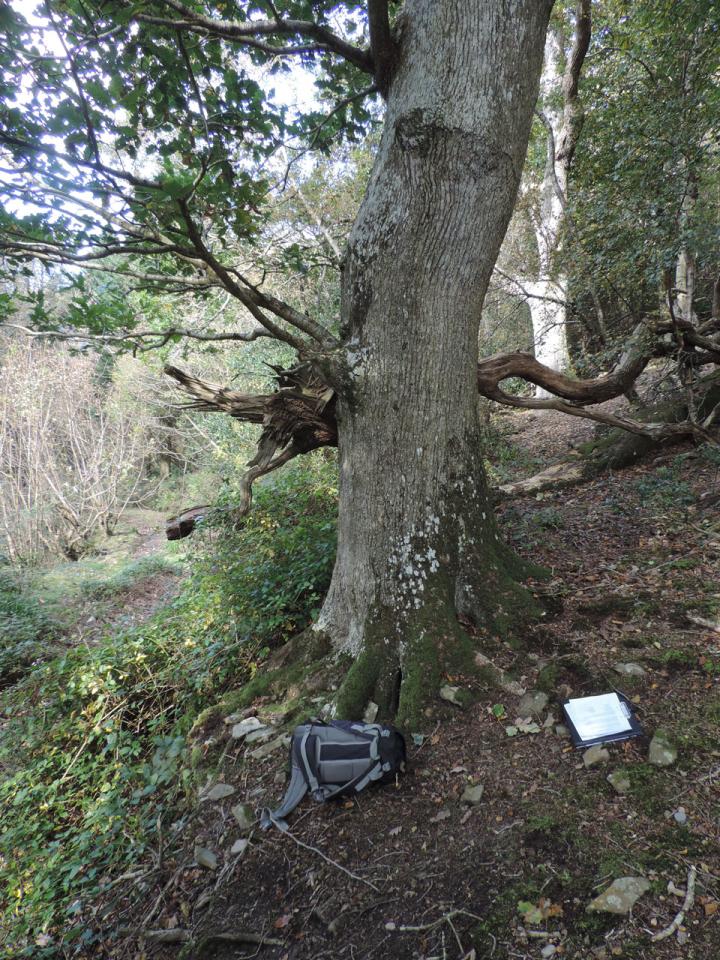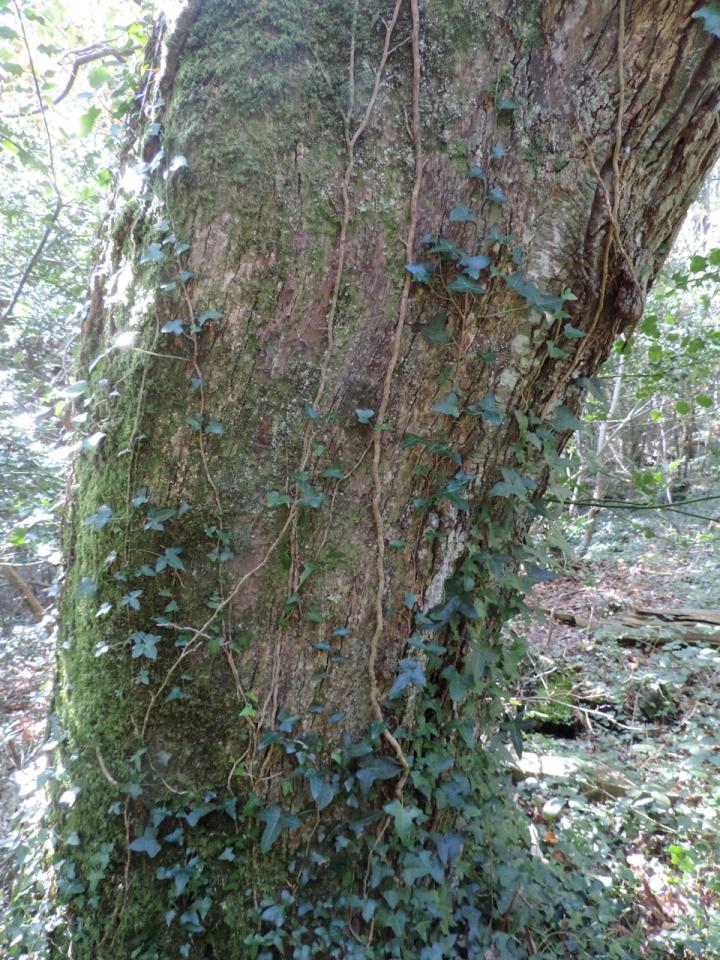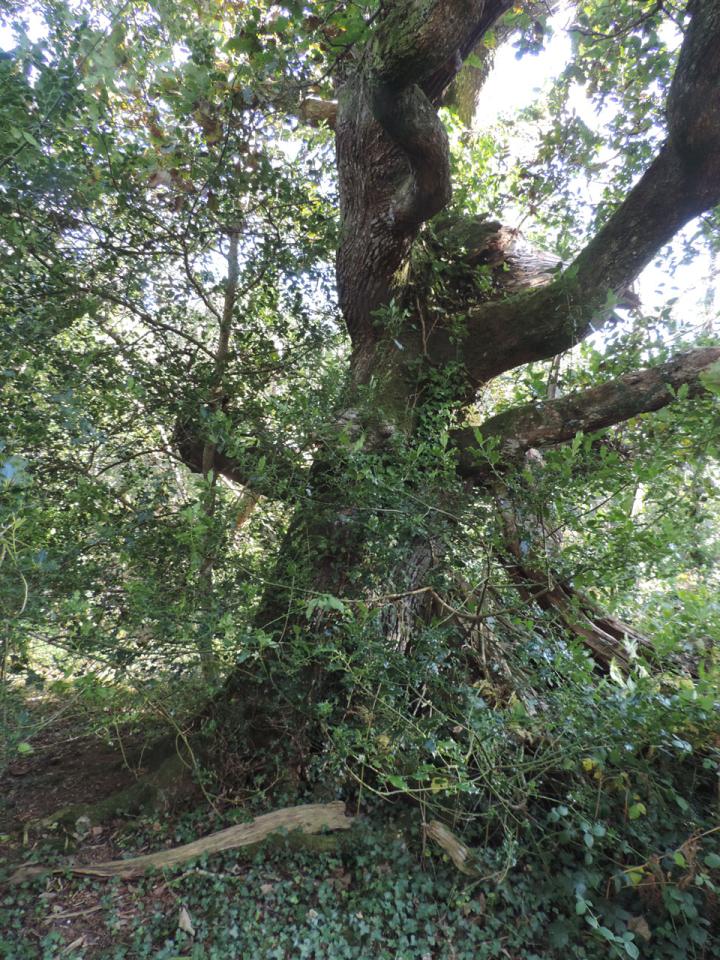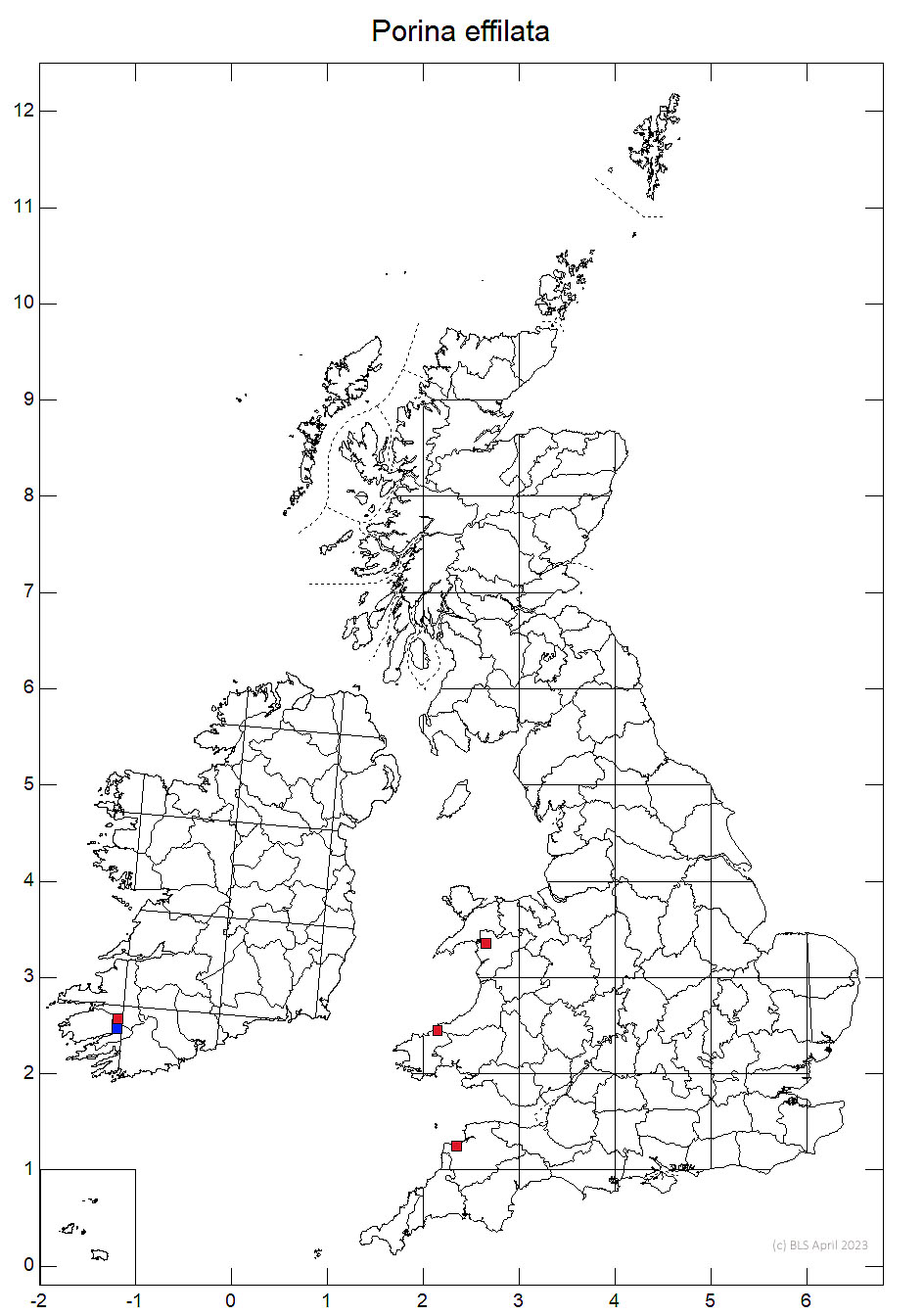Porina effilata
Draft
Thallus superficial, well-developed, ± smooth to granular or verrucose, dull grey-green to dull orange-brown, orange or pinkish when fresh, pale grey to green-grey in dried collections. Perithecia 0.36–0.9 mm diam., pale pinkish cream to orange-pink, pale pink-brown or yellow-brown, one to three quarters immersed in the thallus, sometimes pruinose when prominent; involucrellum and exciple yellow (Porina- yellow). Ascus apex ± truncate to rounded, without a ring structure. Pycnidia are similar to the perithecia but smaller. Ascospores 7- to 14-septate, 40–90 × 8–12 μm, distinctly inflated in the upper half and tapering towards the proximal end. Perithecia and pycnidia UV+ pale yellow.
Porina effilata is a difficult species to spot but easily identifiable once found. The combination of smooth black-green to dull orange-brown thallus with pale orange to yellow-brown UV+ pale yellow perithecia that are one to three quarters immersed in the thallus is unique in Britain. The only common lookalike, Thelopsis rubella, has a greener thallus and smaller UV– red-brown perithecia and very different asci and spores. Two very rare Porina species, Porina atlantica and the true Porina rosei have similar yellowish (in the case of P. rosei at least also UV+) perithecia immersed in orange-brown thalli but have verrucose to isidiate thalli, rather than a smooth thallus.
Porina effilata is a woodland species found in low altitude oceanic woods near the coast in the south west of Britain. It occurs in two separate habitats, base rich bark on veteran Oaks and on mildly base rich rock. Both occur in very sheltered and humid locations, which are not too densely shaded. It both habitats it occurs in intermittently flushed habitats associated with other lichens and week bryophyte growth. It avoids both dry bark/rock and strongly flushed habitat with strong bryophyte growth. It avoids sites fully exposed to the sun but is also lost to deep shade both from exotic species such as Rhododendron but also to the shade of native species including Holly and Ivy.
In most of its range Porina effilata is predominantly an epiphyte and the rock habitat is likely to be unusual. Potentially rock only sites represent relic populations in sites that once had larger epiphytic populations. Of the Welsh rock sites Orange & Chambers (2017) certainly thought the one at Teifi Gorge was a refuge site in woodland damaged by tree felling and quarrying.
The habitat on trees at Clovelly is very distinct, occurring in communities distinguished by the presence of several rare southern oceanic species including Porina hibernica and Agonimia octospora, in well developed examples of the Southern Woodland Base Rich Bark Assemblage (Agonimion octosporae). Associated species from four samples are listed below.
| Species | Occurences |
| Porina effilata | 4 |
| Porina hibernica | 3 |
| Agonimia octospora | 2 |
| Aquacida viridifarinosa | 2 |
| Opegrapha vulgata | 1 |
| Coenogonium nimisii | 1 |
| Cresponea premnea | 1 |
| Enterographa crassa | 1 |
| Pachyphiale carneola | 1 |
| Syncesia myrticola m. sorediata | 1 |
| Thelopsis corticola | 1 |
At Teifi Gorge, Orange & Chambers (2017) found Porina effilata was on slightly overhanging mildly base rich rock where mostly overgrew the hepatic Marchesinia mackaii as a thin grey thallus with an orange tinge, but locally on weakly growth of the mosses Neckera complanata and Thamnobryum alopecurum. Agonimia octospora did survive as a relic on a few trees but P. effilata was not found on trees

Rare, S.W. Ireland, W. Wales (Cardigan, Merioneth), S.W. England (N. Devon). Sanderson (2020) reviewed the information on the Englaish and Welsh sites and revisited the English site.
Deer Park, Clovelly, VC4 North Devon: a relic old growth pasture woodland in the site of a former deer park with frequent ancient Oak and old Hollies along with younger infill developed since grazing ceased some time in the earlier part of the 20th C.. The woodland and adjacent landscape park at Clovelly is exceptionally rich in southern oceanic woodland lichens (Coppins & Coppins, 2005, Hope et al, 2006 & Sanderson, 2009). Porina effilata was first found on a single old Oak in 1994 (O’Dare & Coppins, 1994) and refound on this tree in 2005, along with an additional two more Oaks supporting this lichen (Coppins & Coppins, 2005, Hope et al, 2006 & Coppins et al, 2007). In 2020, the original population on the 1994 tree was refound along with two new populations, these were also on old Oaks. The two additional 2005 populations were not refound. One tree was not relocated but the other was and the Porina effilata colony was found to have been lost to the shade of Holly and Ivy overgrowth in the absence of grazing.
Teifi Gorge, Teifi Estury Woodlands and Marches SSSI, VC46 Cardiganshire: an oceanic wood in a ravine near the coast, but much damaged by quarrying and tree felling. The site is within the Teifi Estury Woodlands and Marches SSSI and the Coedmor National Nature Reserve. The site has a rich lichen assemblage on relic natural rock faces and veteran trees. Porina effilata was found in 1996 on a single well-lit rock-face. The same rock face was relocated by Orange & Chambers (2017). This was an unquarried natural rock face, and the richest site in the NNR for relic old woodland lichens. In this sites many of the notable species are found in small quantity, due to a history of woodland exploitation and quarrying at the site. In the absence of grazing, at this site, natural tree-fall on steep slopes appears to occur occasionally, forming small glades and allowing increased light to rock faces. This appeared to be maintaining the limited areas of interest. These, however rich areas were very limited in extent and maintaining and expending the lichen interest is unlikely with out intervention.
Ceunant Coch, Bryn Bwbach, VC48 Merioneth: only one other Welsh locality for Porina effilata known. It was recorded here by Alan Orange in May 2002, in small quantity on a slightly calcareous cliff face in woodland (Orange & Chambers, 2017).
Porina effilata should be looked for in other old growth woodlands in the south west, especially those with well developed Agonimia octospora – Porina hibernica communities.
